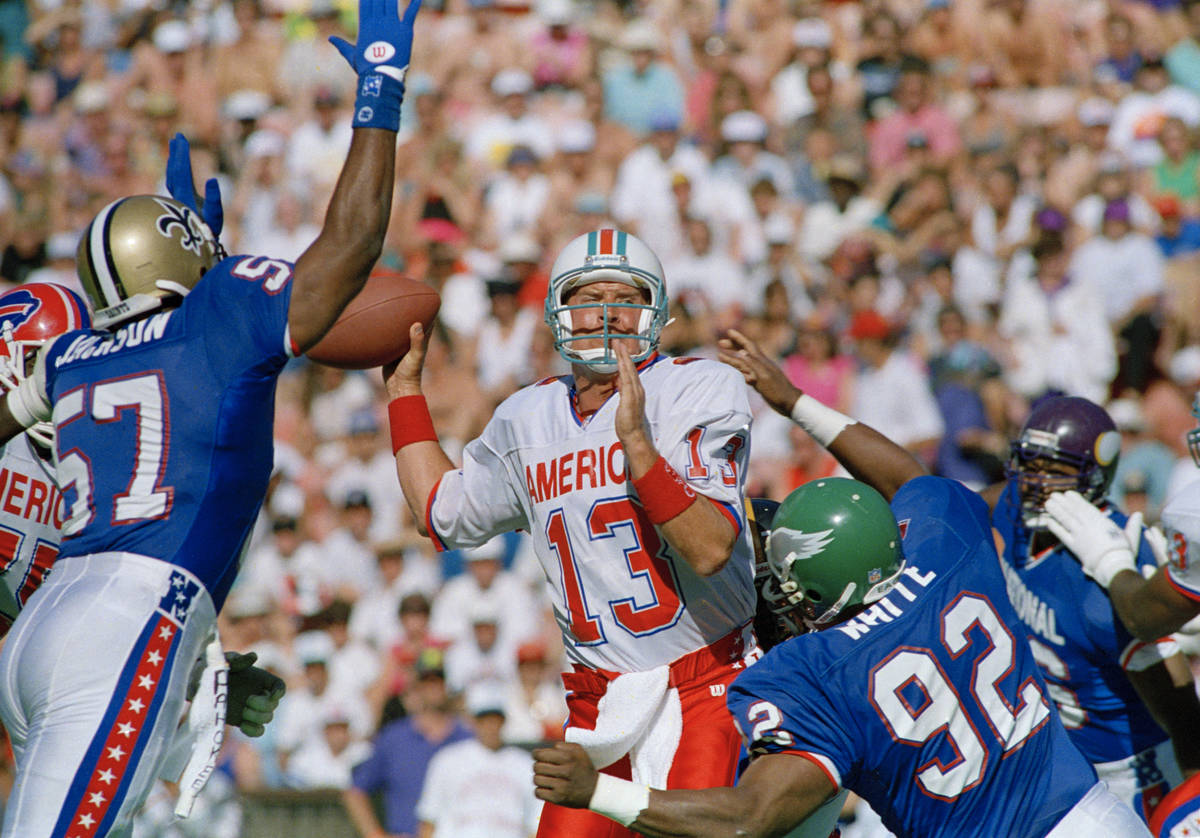Pro Bowl’s long and winding journey to Las Vegas
Cleveland quarterback Otto Graham led the American Conference to a 28-27 win over the National Conference in a 1951 classic that is considered the first Pro Bowl. But it wasn’t the first pro football all-star game.
That concept, which will play out at Allegiant Stadium on January 31 when Las Vegas hosts the 2021 Pro Bowl, was born in 1939 when the NFL champion New York Giants edged a team of all-stars from the rest of the league in a defensive struggle that bore no resemblance to the shootouts of today’s Pro Bowls.
There were five such contests from the 1938 season through the 1942 season when the game went on hiatus due to travel restrictions during World War II.
It was revived with that 1951 classic in Los Angeles, which was when the concept of pitting players from the American Conference against those from the National Conference was born.
Los Angeles would become the permanent home of the annual affair until 1972, when the league experimented with rotating sites.
O.J. Simpson won the MVP award in the 1973 game in Irving, Texas. Kicker Garo Yepremian followed the next year with five field goals to lead a John Madden-coached AFC team to a 15-13 win over Tom Landry’s NFC team in Kansas City.
The next five years saw games in Miami, New Orleans, Seattle, Tampa and a return to Los Angeles before the Pro Bowl found its longtime home in Hawaii.
From 1980 through 2009, Aloha Stadium in Honolulu became synonymous with the game.
While it was a welcome treat for the players, the exotic locale may have started to take some of the sting out of the action on the field. The games had typically been competitive in the 1950s and 60s, but ratcheted up in intensity in the 1970s after the merger.
Both conferences tried to flex their superiority.The result was often hard-hitting action between the stars of the league.
Hawaii made it more of a party. While there were still some defensive struggles, the first game in Honolulu was indicative of where the game was headed.
The NFC had won the 1979 game in Los Angeles 13-7 when Roger Staubach hit Cowboys’ teammate Tony Hill for a 19-yard touchdown in the third quarter to account for the only points of the second half, which came after a shanked punt by the Raiders’ Ray Guy. There were no such troubles for the offenses a year later in Hawaii, as the NFC prevailed 37-27.
The Pro Bowl would remain there until 2010 when the league moved the game up to the week between the conference championship games and the Super Bowl. There was a belief the move would help spark additional interest in the game from those who viewed an exhibition after the Super Bowl as being somewhat anticlimactic, but it was also to avoid a conflict with a post-Super Bowl weekend that year that featured the NBA All-Star Game, the Daytona 500 and the Winter Olympics.
The trade-off would be that Super Bowl participants would no longer be able to compete, but many star players were already passing on the contest anyway.
The game returned to Hawaii for three more seasons after that, including a 2012 game that was so lackluster it eventually prompted Commissioner Roger Goodell to threaten to cancel the tradition entirely.
That was at least part of the spark to alter the format from AFC against NFC to a fantasy draft between team captains.
The 2015 game, the second under that format, moved to Glendale, Arizona, the same site as the Super Bowl, and was used to kick off the week of festivities.
The captains format was scrapped after the 2016 game, which returned to Hawaii for the final time.
Several cities, including Rio de Janeiro and Sydney, put in bids to host the game starting in 2017. Orlando, Florida, was eventually awarded the game on a multiyear deal.
The Pro Bowl remained there for four seasons before Las Vegas was awarded the 2021 game on Tuesday.
Contact Adam Hill at ahill@reviewjournal.com. Follow @AdamHillLVRJ on Twitter.


























